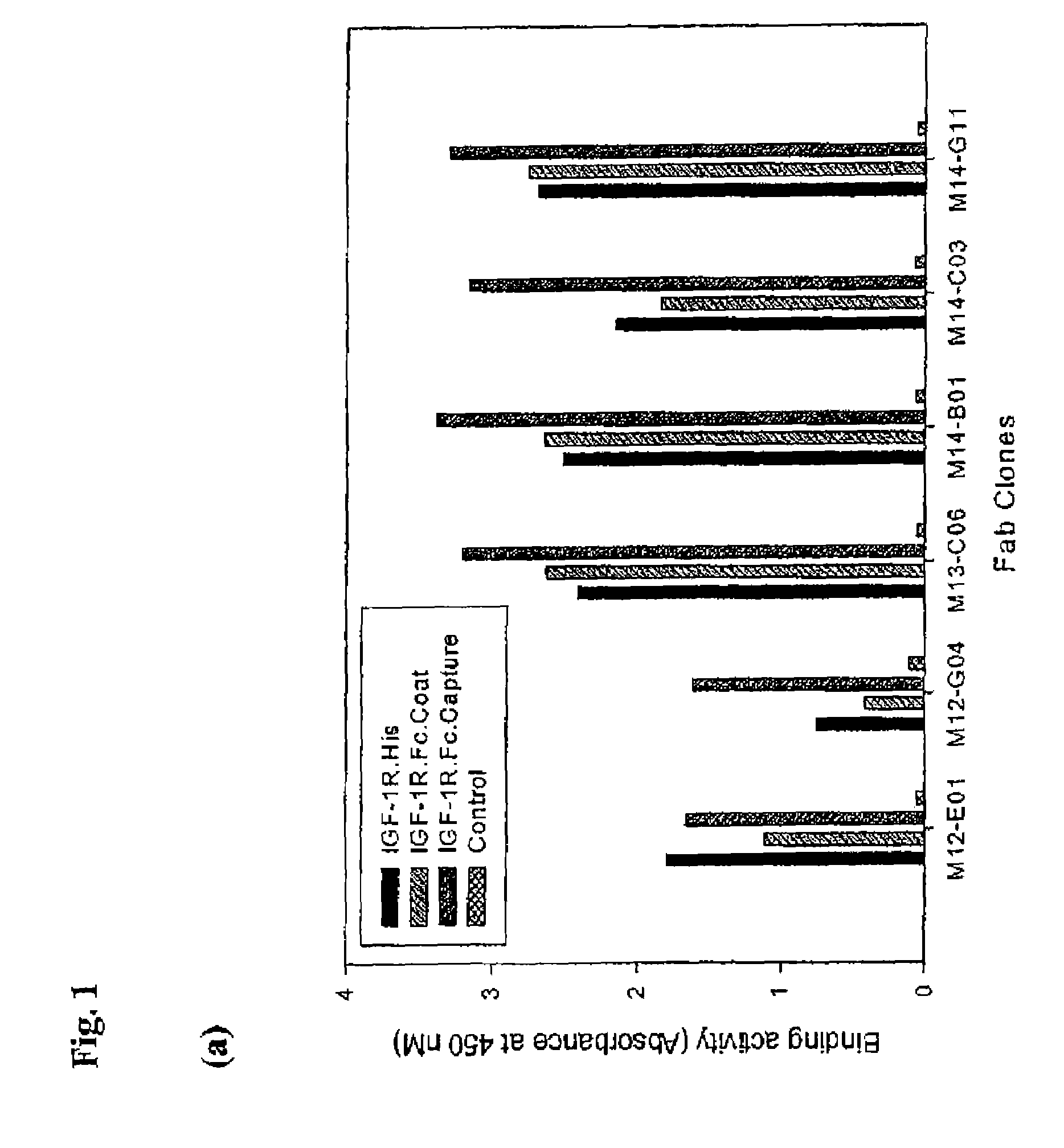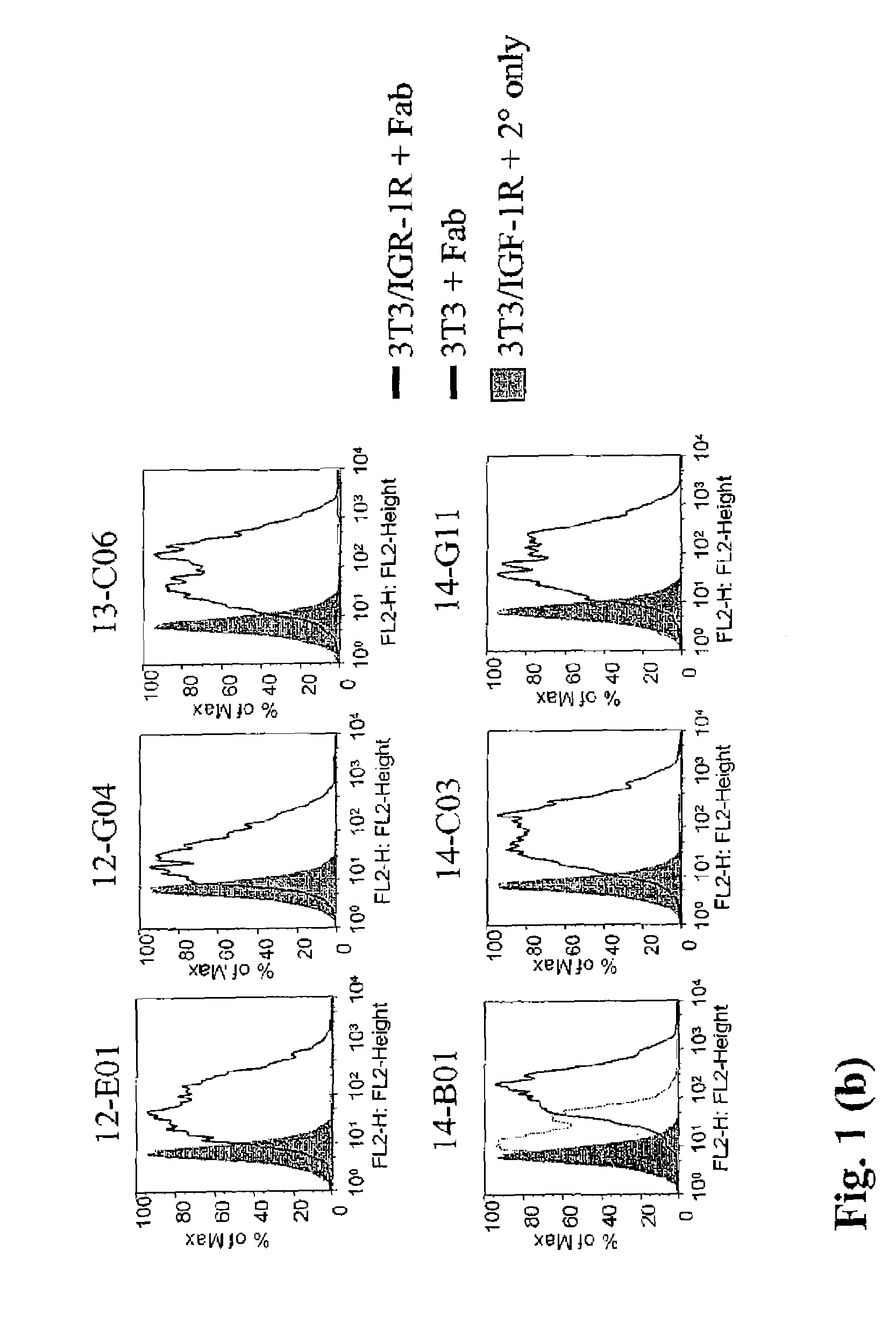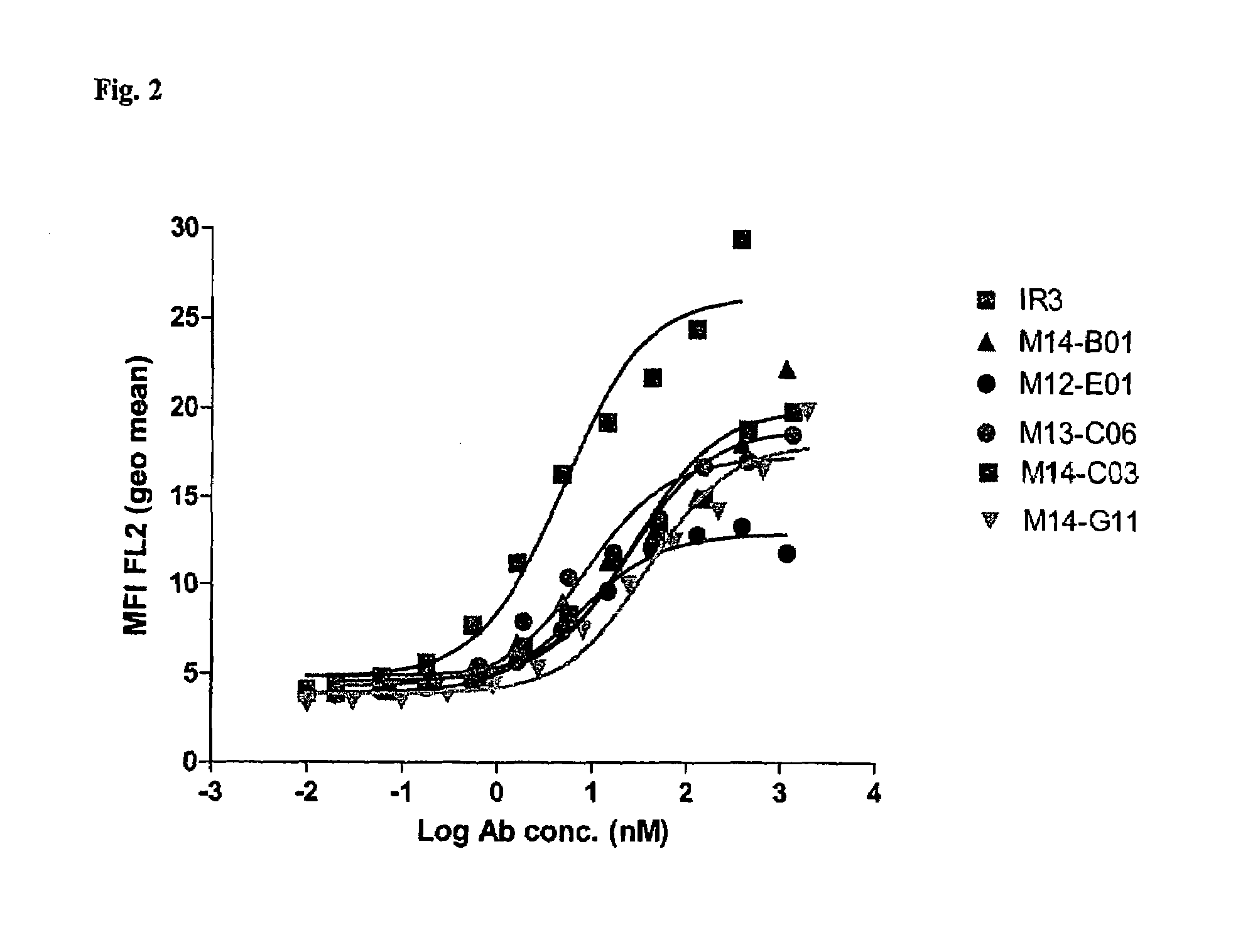Anti-IGF-1R antibodies and uses thereof
a technology of igf-1r and antibodies, applied in the field of anti-igf-1r antibodies, can solve the problems of increasing the risk of developing cancer in individuals with higher than normal circulating igf levels, inhibiting igf-1r function, and providing encouraging but limited success
- Summary
- Abstract
- Description
- Claims
- Application Information
AI Technical Summary
Benefits of technology
Problems solved by technology
Method used
Image
Examples
example 1
Selection of IGF-1R Specific Fabs from Phage Libraries
[0559]Recombinant human IGF-1R ectodomain was used to screen a human naïve phagemid Fab library containing 3.5×1010 unique clones (Hoet, R. M., et al. Nat Biotechnol. 23(3):344-8 (2005), (“Hoet et al.”) which is incorporated herein by reference in its entirety). Two distinct panning arms were followed using biotinylated IGF1R-his and IGF1R-Fc protein. Proteins were captured on steptavidin-coated magnetic beads prior to incubation with the phage library. In the case of IGF1R-Fc, a biotinylated anti-Fc antibody was captured on the magnetic beads, followed by captured of the Fc fusion protein. Selections were performed as described in Hoet et al. After 3 rounds of panning, the 479 bp gene III stump was removed by MluI digestion, and the vector was religated for soluble Fab expression in TG1 cells. ELISA analysis of 920 clones from the biotinylated IGF1R-his arm yielded 593 positive clones, containing 33 unique sequences. ELISA analy...
example 2
Binding Activity of Fabs to IGF-1R Expressed on Tumor Cells
[0560]The ability of Fabs to bind to the wild type IGF-1R was determined by flowcytometry using MCF-7 tumor cell line.
[0561]MCF-7 cells (Human Breast Adenocarcinoma from NCI) were split 24 hours prior to the setup of the assay to obtain 70% confluent monolayer. Routinely, MCF-7 cell line was maintained within 20 passages. Cells were lifted with cell dissociation buffer (Gibco catalog #13151-014), counted, washed and adjusted to 1×106 cells / ml and one ml of cells were then added to each tube (12×75 mm tube Falcon catalog#352054). Cells were pelleted and supernatant removed by centrifugation at 1200 rpm for 5 min and 100 μl of diluted antibodies were then added to the cell pellet. Purified Fabs were tested at a starting concentration of either 210 or 60 μg / ml with 1:3 dilutions in FACS buffer, down to 0.001 μg / ml. FACS buffer used throughout the assay was PBS (without Ca++ / Mg++) containing 1% BSA (Sigma catalog#A-7906) and 0.1...
example 3
Inhibition of Ligand Binding to IGF-1R by Fabs
[0565]The ability of Fabs to block the binding of IGF-1 and IGF-2 ligands to IGF-1R was determined using a radioimmunoassay (RIA).
[0566]Ligand blocking assay (RIA). Recombinant human IGF-1 (Cat #291-G1), IGF-2 (Cat #292-G2), insulin (Cat #Custom02) human Insulin Receptor (Cat #1544-1R) were purchased from R&D Systems, Inc., Minneapolis, Minn. Insulin (Arg-Insulin, Cat #01-207) was purchased from Upstate Cell Signaling Solutions (Lake Placid, N.Y. (now part of Millipore, Concord, Mass. (USA)). 125I-rhIGF-1 (Cat #IM172), 125I-rhIGF-2 (Cat#IM238) and 125I-rhInsulin (Cat#IM166) were purchased from Amersham Biosciences (Piscataway, N.J.). AffiPure goat anti-human IgG, Fcγ fragment specific antibodies (Cat #109-005-098, Jackson ImmunoResearch, West Grove, Pa.) was used for IGF-1R-Fc capture. As detection antibody, goat anti-mouse IgG HRP (Cat #1030-05, Southern Biotech Birmingham, Ala.) was used.
[0567]As positive controls for IGF-1 and IGF-2 b...
PUM
 Login to View More
Login to View More Abstract
Description
Claims
Application Information
 Login to View More
Login to View More - R&D
- Intellectual Property
- Life Sciences
- Materials
- Tech Scout
- Unparalleled Data Quality
- Higher Quality Content
- 60% Fewer Hallucinations
Browse by: Latest US Patents, China's latest patents, Technical Efficacy Thesaurus, Application Domain, Technology Topic, Popular Technical Reports.
© 2025 PatSnap. All rights reserved.Legal|Privacy policy|Modern Slavery Act Transparency Statement|Sitemap|About US| Contact US: help@patsnap.com



